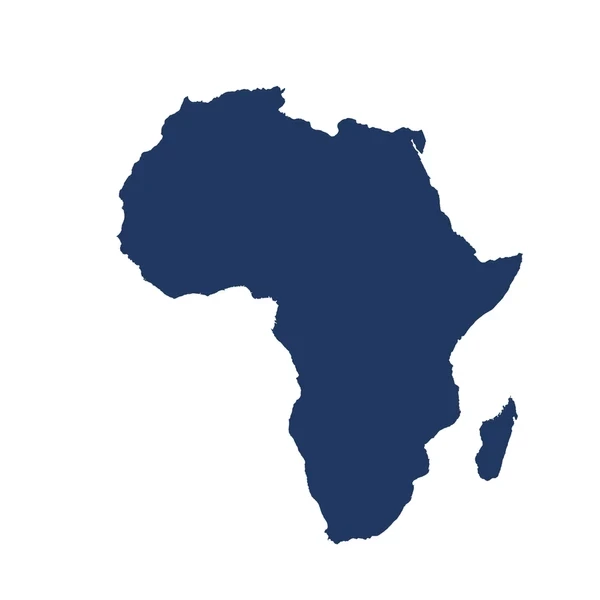
The size of the informal economy as a share of Gross Domestic Product (GDP) in Africa is the largest in the world and with most employments anticipated to be created in the informal economy, they will continue to be the spark of life of economies.
According to the World Bank (2021), Informality in most African economies is often characterised by low human capital, low productivity, limited access to basic services, limited financial inclusion, low earnings, and irregular, unpredictable income.
Despite these vulnerabilities, informal economy workers are not typically covered by social protection programs. Safety net programs exist in most countries, but coverage is low and most provide support only to the extremely poor. Coverage of existing social insurance programs is also limited to the small formal economy in the region.
In light of existing vulnerabilities, high and insistent rates of informality, and limited ways to assess needs of informal sector as evidenced in the pandemic, it is important for governments in Africa and beyond to revisit their social protection programmes. Expanding coverage to workers in the informal economy should be at the forefront of social protection priorities in these economies.
The Covid-19 pandemic highlighted the vulnerabilities of the vast and diverse informal economy as well as the lack of social protection schemes to provide timely support, especially to those in urban areas.
Strategies to ensure the affordability of social insurance contributions for informal workers informal workers’ oftentimes low and irregular incomes represent a key challenge to their integration into social insurance systems, as contributions can be unaffordable or not aligned with their livelihoods (i.e. requiring fixed monthly contributions when earnings may be seasonal or irregular).
The World Bank’s response to this challenge is to argue that countries with high levels of informality should move away from the traditional social insurance model based on mandatory contributions and embrace voluntary individual savings accounts, which they argue would help to build resilience to shocks while enabling long-term savings.
Critics of this strategy argue that voluntary schemes tend to feature adverse selection effects, often resulting in a lack of protection for the most vulnerable workers.
- ‘Zim’s retailers deserve a wage subsidy’
- ‘Zim’s retailers deserve a wage subsidy’
- Africa’s debt conundrum
- High input costs could hit crop output
Keep Reading
Another crucial issue with schemes based on voluntary contributions of informal workers is that, in many cases, workers’ income is volatile and considerably low, and, therefore, they may not adequately protect poorer informal workers, unless other measures have provided at least a basic level of protection for all.
According to Women in Informal Employment: Globalizing and Organising (WIEGO), the social protection financing gap is the spending that is required to ensure at least a minimum adequate provision of social protection across the life cycle for all.
In 2020, the total estimated financing gap for developing countries was about US$ 1.2 trillion.
Countries have made progress in closing the financing gap by mobilising more domestic resources. In these efforts, general taxes (including income, consumption, corporate taxes) and social insurance contributions are particularly important.
In some cases, countries have increased the social protection budget by drawing from other areas of government spending or taxing natural resources.
For low-income countries, international aid can play an important role in supplementing domestic financing and making progress towards universal social protection.
In countries such as Zimbabwe with a high share of informal employment, mobilising sufficient domestic resources to finance universal social protection can be challenging. In these contexts, making social insurance systems accessible and affordable for informal workers is an important strategy to expand the financing base for social protection.
Other alternatives to increase financing for the expansion of social protection to informal workers include innovative approaches that go beyond general taxes and employment-linked financing.
By emphasising the value chains that informal workers operate in, they seek to gain co-financing for social protection from those who benefit from the labour of workers in informal employment.
WIEGO report 2023 further asserts that, the Covid-19 pandemic highlighted the urgency of addressing the chronic challenge of the social protection coverage gap. It notes that, according to the latest ILO estimate (2020), 53.1% of the world population was not covered by a single social protection benefit.
In order to expand social protection and effectively reach the population currently excluded, addressing the issue of the financing gap is crucial. The financing gap is the spending required to close the coverage gap and ensure at least a minimum adequate level of social protection for all.
Countries generally use a mix of different taxes to fund their social protection system, such as personal income tax, corporate tax and value-added tax.
Low- and middle-income countries collect on average just under 11%of GDP in tax revenue, compared to 16.4% collected on average in high-income countries.
Furthermore, the tax structure of low- and middle-income countries is often much less progressive (in other words, poor families pay a higher share of their income in taxes than rich families), in comparison to high-income countries.
According to the ILO, generally there is some room to increase tax revenues even in low-income countries.
Good examples of this are Bolivia, Botswana, Mongolia and Zambia, which have introduced taxes on their natural resources to finance their social protection programmes.
Despite also being classified as low-income countries, Rwanda and Uganda raised around 13% to 14% of GDP and Nepal – recently reclassified as a lower-middle income country — managed to generate 23% of GDP in taxes.
Another path to increasing domestic financing for social protection is to step up efforts to collect social security contributions, which globally represent 5.7% of GDP and 18.8% of total tax revenues.
While social security contributions make up a higher proportion of revenues in high-income countries, they are an important income of low- and middle-income countries’ financing strategies as well.
As a percentage of GDP, social security contributions generate 1.3% in low-income countries, 2.5% in lower-middle income countries, 3.3% in upper-middle income countries and 8.6% in high-income countries.
A third strategy is to increase the share of the country’s budget dedicated to social protection.
In the case of low-income countries, an increase to the same level as mid-low-income countries through the channelling of resources to social protection could support increases in coverage. In response to the Asian financial crisis of 1997, the Thai government funded the expansion of health care mostly by reallocating spending away from the military.
Other countries also have followed similar paths to increase social protection funding.
However, it should be noted increasing social protection expenditure by re-prioritising budgets can be difficult in resource-constrained, low-income countries where budgets are generally tight and increasing social protection spending should not be to the impairment of other important social sectors, such as education and health.
- Samuel Wadzai is an informal economy analyst and Viset executive director. He writes in his personal capacity.
- These weekly articles are coordinated by Lovemore Kadenge, an independnt consultant, managing consultant of Zawale Consultants (Private) Limited, past president of the Zimbabwe Economics Society and past president of the Chartered Governance & Accountancy Institute in Zimbabwe. — kadenge.zes@gmail.com or mobole no +263 772 382 852










